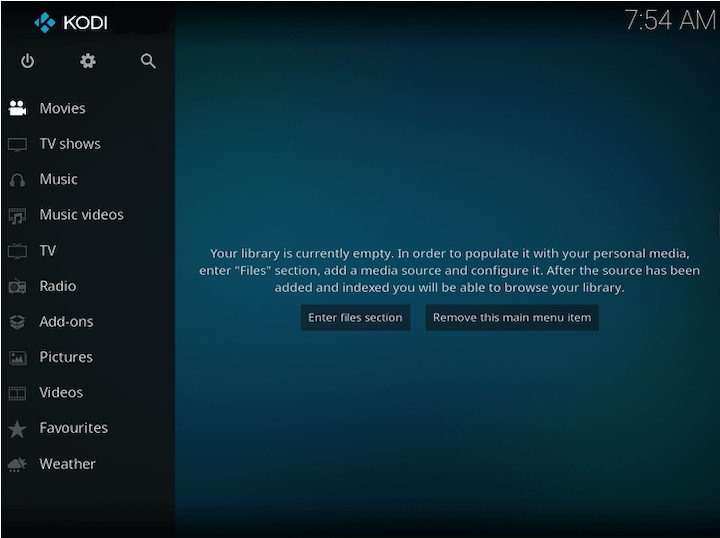How To Install Kodi on Fedora 40

Kodi, the renowned open-source media player, has become a go-to choice for streaming enthusiasts worldwide. With its versatile features and customizable interface, Kodi transforms your Fedora 40 system into a powerful media center. In this comprehensive guide, we’ll walk you through the step-by-step process of installing Kodi on Fedora 40, ensuring that you can enjoy your favorite content seamlessly.
Prerequisites
Before diving into the installation process, let’s ensure that your Fedora 40 system meets the necessary requirements. Kodi is compatible with most modern hardware configurations, but it’s essential to have sufficient processing power and memory to handle media playback. Additionally, make sure you have the appropriate user permissions to install software packages on your system.
To guarantee a smooth installation, it’s crucial to update your system packages to their latest versions. This step helps prevent potential compatibility issues and ensures that you have access to the most recent bug fixes and security patches.
Step 1: Update System Packages
Updating your Fedora 40 system packages is a straightforward process. Open the terminal and execute the following command:
sudo dnf update -yThis command instructs the DNF package manager to check for available updates and install them automatically. The -y flag confirms the installation without requiring manual intervention.
Step 2: Enable RPM Fusion Repository
Fedora 40 relies on the RPM Fusion repository to provide a wide range of additional software packages, including Kodi. Enabling the RPM Fusion repository is a crucial step in the installation process. Follow these commands to enable both the free and non-free RPM Fusion repositories:
sudo dnf install https://download1.rpmfusion.org/free/fedora/rpmfusion-free-release-$(rpm -E %fedora).noarch.rpm -y
sudo dnf install https://download1.rpmfusion.org/nonfree/fedora/rpmfusion-nonfree-release-$(rpm -E %fedora).noarch.rpm -yThese commands download and install the necessary RPM Fusion release packages, enabling access to a vast collection of software not included in the default Fedora repositories.
Step 3: Install Kodi
With the RPM Fusion repository enabled, installing Kodi on Fedora 40 becomes a breeze. Use the following command to install Kodi via the DNF package manager:
sudo dnf install kodi -yDNF will handle the installation process, resolving any dependencies and ensuring that Kodi is ready to use on your system. Once the installation is complete, you can verify its success by launching Kodi from the applications menu or the terminal.
Step 4: Configure FirewallD for Kodi
To ensure a secure and uninterrupted streaming experience, it’s important to configure FirewallD, Fedora’s firewall management tool. Follow these steps to check, install, and enable FirewallD:
sudo systemctl status firewalld
sudo dnf install -y firewalld
sudo systemctl enable --now firewalldThese commands verify the status of FirewallD, install it if necessary, and enable it to start automatically on system boot. By properly configuring FirewallD, you can protect your system while allowing Kodi to access the necessary network resources.
Step 5: Launching Kodi
Now that Kodi is installed and FirewallD is configured, it’s time to launch the media player and start enjoying your favorite content. There are two primary methods to launch Kodi on Fedora 40:
CLI Method
If you prefer using the command line, you can launch Kodi by simply typing the following command in the terminal:
kodiThis command will start Kodi, and you’ll be greeted with its intuitive interface.
GUI Method
For those who prefer a graphical approach, launching Kodi is just as easy. Follow these steps:
- Open the Applications menu on your Fedora 40 desktop.
- Navigate to the Multimedia or Entertainment category.
- Click on the Kodi icon to launch the media player.

Configuring Kodi for Optimal Performance
With Kodi up and running, it’s time to configure it for the best possible streaming experience. Start by setting up your media libraries, pointing Kodi to the directories where your movies, TV shows, and music files are stored. This allows Kodi to organize and catalog your media collection for easy access.
To enhance Kodi’s functionality, consider installing essential add-ons from the official Kodi repository. These add-ons provide additional features, such as streaming services, live TV, and more. Be cautious when installing third-party add-ons, as they may not be reliable or legal.
Optimize Kodi’s settings to ensure smooth playback and minimize buffering. Adjust the video and audio settings based on your hardware capabilities and network connection. Experiment with different configurations to find the perfect balance between quality and performance.
Troubleshooting Common Issues
While the installation process is generally straightforward, you may encounter some common issues. If Kodi fails to install or launch, double-check that you have enabled the RPM Fusion repository correctly and that all system packages are up to date.
If you experience performance issues, such as stuttering or buffering, consider optimizing your network connection or adjusting Kodi’s cache settings. Clearing the cache and reducing the cache size can help alleviate performance problems.
Congratulations! You have successfully installed Kodi. Thanks for using this tutorial for installing the Kodi free media player on your Fedora 40 system. For additional or useful information, we recommend you check the official Kodi website.